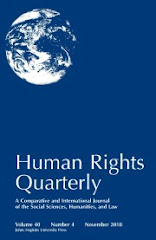The purpose of this chapter is to assess how the Department of Defense Law of War Manual approaches the relationship between the law of war and international human rights law, as seen against the broader context of the changing legal framework of warfare and military operations.
National military manuals are widely understood to serve two main functions. They are an instrument for disseminating the law of war and for expressing a nation’s understanding of its own legal obligations. The first function is essentially passive. Manuals convey the rules to their readers, even if this means translating the black letter of the law into a different format. The second function is dynamic. As Professor Charles Garraway notes, the aim of national manuals “is not to reach a consensus agreement, but to reflect the position adopted by the State concerned.” In doing so, national manuals shape the law by applying, reaffirming and developing it. These two functions pull the DoD Manual in different directions. Promoting a better understanding of the challenges posed by international human rights law requires a nuanced approach that acknowledges the multifaceted relationship between the law of war and human rights. However, such subtlety is difficult to reconcile with the certainty that the application of the law on the battlefield and the effective promotion of the United States’ national position on these matters demands. In its response to the changing legal framework of warfare, the Law of War Manual is thus torn between enlightenment and advocacy.
I develop these arguments in three steps. The first section of the chapter will trace the evolving character of the legal framework of warfare, including the impact of international human rights law. The second section will explore the Manual’s response to these developments. The third section will assess the Manual’s approach against the two traditional functions of military manuals, the law-disseminating and the law-shaping function.
Sunday, July 2, 2017
Sari: Hybrid Law, Complex Battlespaces: What's the Use of a Law of War Manual?
Aurel Sari (Univ. of Exeter - Law) has posted Hybrid Law, Complex Battlespaces: What's the Use of a Law of War Manual? (in The United States Department of Defense Law of War Manual: Commentary & Critique, Michael A. Newton ed., forthcoming). Here's the abstract:





